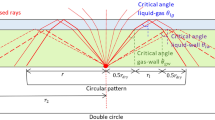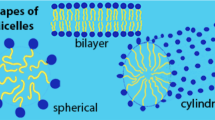This paper describes using the familiar MT-2 platform to build an instrument capable of supporting dynamic observations and recording of the kinetics of physicochemical processes during cryoscopic osmometry of crude oil media and refined petroleum products in automatic mode. Modifications of the MT-2 design generally include introduction of a laser source, a videographic speckle recording system, a digitizing board for the speckle recording signal, a stepper motor control module and redesigned micromechanics controllable by it, which via signals supplied by the computer (the nature of which is controlled by specially written software) alters the movement of the analytical head. As a result of the modification, the MT-2 with digital speckle recording, laser module, and microcamera allows us: to determine the transition to irreversible aggregation of the asphaltenes, characterized by their deposition on the walls of the measuring bath (after desorption of the resins); to do realtime classification of crude oil by speckle morphometry methods; to observe and identify the emulsion properties of the crude oil, including formation of “carpenter’s level” bubble inclusions and coacervate droplets; to carry out a rheological falling-drop experiment with thermographic monitoring; to make rheogoniometric observations while rotating the measuring instrument or thin cuvet; to observe wavy perturbations on the surface of the medium while the drop is falling, with delayed relaxation (dissipation) due to viscoelastic properties.




Similar content being viewed by others
References
A. V. Topchiev, ed., Composition and Properties of Crude Oils and Gasoline/Kerosene Fractions [in Russian], Izdat. Akad. Nauk SSSR, Moscow (1957). 521 pp.
S. R. Sergienko, High Molecular Weight Petroleum Compounds [in Russian], Gos. Nauch.-Tekh. Izdat. Neft. i Gorn.-Topl. Lit., Moscow (1959). 412 pp.
Yu. V. Pokonova, The Chemistry of High Molecular Weight Petroleum Compounds [in Russian], Izdat. Leningr. Univ., Leningrad (1980). 172 pp.
S. R. Sergienko, High Molecular Weight Non-Hydrocarbon Petroleum Compounds [in Russian], Nedra, Moscow (1964). 545 pp.
S. G. Agaev, N. S. Yakovlev, and S. V. Gultyaev, Russian Journal of Applied Chemistry, 80, 486-491 (2007).
Y. V. Loskutova, I. V. Prozorova, N. V. Yudina et al., Journal of Engineering Physics and Thermophysics, 77, 1034-1039 (2004).
M. M. F. Al-Jarrah and R. L. Apikian, Journal of Chemical Technology and Biotechnology, 39, 231-236 (1987).
B. K. Sharma, C. D. Sharma, S. D. Bhagat et al., Petroleum Science and Technology, 25, 93-104 (2007).
A. Guzman, A. Bueno, and L. Carbognani, Petroleum Science and Technology, 27, 801-816 (2009).
S. Acevedo, L. B. Gutierrez, G. Negrin et al., Energy & Fuels, 19, 1548-1560 (2005).
H. W. Yarranton, H. Alboudwarej, and R. Jakher, Ind. Eng. Chem. Res., 39, 2916-2924 (2000).
S. G. Agaev, E. O. Zemlyanskii, A. N. Grebnev et al., Russian Journal of Applied Chemistry, 79, 1360-1364 (2006).
E. O. Zemlyanskii, A. N. Grebnev, and S. V. Gul’tyaev, in: Oil and Gas in Western Siberia: Proceedings of the International Scientific and Technical Conference [in Russian], TyumGNGU, Tyumen (2005), Vol. 1, pp. 202-203.
O. V. Gradov, Mol. Vest., 3, 46-56 (2012).
O. V. Gradov, Vestnik Novykh Med. Tekhnologii, 20, 123-125 (2013).
V. I. Kirsanov, Author’s Abstract, Candidacy Dissertation, MVTU im. N. É. Baumana, Moscow (1986).
V. I. Kirsanov, Yu. G. Monin, and M. M. Sokolova, Fiziologicheskii Zhurnal, 12, 154-155 (1976).
O. V. Gradov, Mol. Vest., 2, 36-56 (2013).
K. E. Pankin, Y. V. Ivanova, R. I. Kuzmina et al., Chemistry and Technology of Fuels and Oils, 47, 112-115 (2011).
Y. V. Maksimuk, A. F. Buglak, V. S. Kruk et al., Chemistry and Technology of Fuels and Oils, 49, 108-114 (2013).
Russian Federation Patent 2208133.
A. V. Notchenko and O. V. Gradov, Zhurnal Radioélektroniki, No. 1, 33 (2012).
S. K. Saha and G. L. Dayanidhi, Heat and Mass Transfer, 48, No. 12, 2059-2068 (2012).
A. V. Dement’ev, A. S. Medzhibovskii, G. G. Nemsadze et al., Chemistry and Technology of Fuels and Oils, 44, 425-429 (2008).
Z. S. Salimov, A. S. Sultanov, S. A. Abdurakhimov et al., Chemistry and Technology of Fuels and Oils, 37, No. 6, 410-413 (2001).
A. N. Dmitrievskii, V. I. Konov, I. A. Volodin et al., Doklady Earth Sciences, 437, 401-406 (2011).
R. Edgeworth, B. J. Dalton, and T. Parnell, European Journal of Physics, 5, 198-200 (1984).
I. Bamforth, Quadrant, 55, 64-65 (2011).
P.-J. Klijn, J. Ellenberger, and J. M. H. Fortuin, Rheologica Acta, 18, 303-307 (1979).
C. S. Venkateswaran, Proc. Ind. Acad. Sci. Section A, 15, 362-370 (1942).
We would like to express our thanks for the cooperation of colleagues in the Department of Metrology and Measuring Instruments, Vernadsky Institute of Geochemistry and Analytical Chemistry (Russian Academy of Sciences), at the facilities of which the first rebuild and redesign of the basic instrument was carried out. We would like to thank the designer O. V. Gradov for the opportunity to do the initial work on his videographic micro osmometer. Special thanks go to the developer of the MT-2, V. I. Kirsanov (formerly with Burevestnik NOP)] and the German service engineers and osmometer specialists, discussions with whom on analogous foreign instruments were useful in optimizing this design.
Author information
Authors and Affiliations
Corresponding author
Additional information
Translated from Khimiya i Tekhnologiya Topliv i Masel, No. 1, pp. 48 – 52, January– February, 2015.
Rights and permissions
About this article
Cite this article
Zaitsev, E.V. Application of Laser Videographic Cryoscopic Micro Osmometry in Measurements of Temperature Depression in Petroleum Products. Chem Technol Fuels Oils 51, 79–86 (2015). https://doi.org/10.1007/s10553-015-0577-x
Published:
Issue Date:
DOI: https://doi.org/10.1007/s10553-015-0577-x




